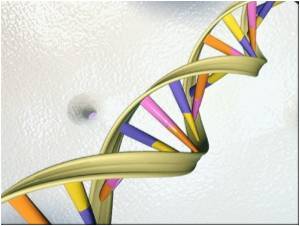The original HIV virus remains and retains control in spite of changing several times to escape the body's immune system, reveals new research.

While HIV has flummoxed scientists for nearly three decades, that's certainly not because our immune system fails to respond. Rather, within two or three weeks of infection, the onslaught of immune cells puts the virus on the run to such an extent that the virus must mutate rapidly to evade the body's defences.
HIV changes quickly and continually, creating thousands and thousands of mutated versions of itself in a process called "viral escape." The virus changes; the immune cells hunting it down change in response; and the virus changes again, and so on, in a kind of molecular arms race.
Lead investigator Ha Youn Lee, the assistant professor in the Department of Biostatistics and Computational Biology, said: "Viral escape is a significant phenomenon in HIV - it's what allows HIV to elude the immune system.
"The dynamics in the earliest stage of infection by HIV are incredibly complex, and understanding what happens is crucial for developing a vaccine."
For the study, Lee's team applied a mathematical model to data originally gathered by David O'Connor, at the University of Wisconsin at Madison, who studies how SIV evolves.
Advertisement
The research took advantage of a method known as ultradeep sequencing, which provides hundreds or thousands of glimpses of a single genetic change, compared to approximately 50 or so looks using conventional methods.
Advertisement
As expected, the team found that immune cells known as CD8+ T-lymphocytes, also known as cytotoxic T cells, are a powerful force in the life of SIV when it first causes infection.
While scientists have known that the CD8 attack on the virus is strong, the latest work quantifies the body's response. They found that the original portions of the virus degrade 400 times faster in response to CD8 cells than they would have if those cells weren't a factor - what scientists call significant "selective pressure" on the virus.
The team also found that SIV creates such mutants in response to the assault by CD8 cells at about the same rate as HIV does.
But the most striking finding is that the original viral genetic sequences are still present in the body months after the initial infection, at a time that scientists call the "viral set point," which occurs about two to five months after infection. It's a signal of just how difficult it is for the body to eradicate HIV from the body - key portions of the virus have managed to survive despite the immense immune assault.
Stephen Dewhurst, professor of Microbiology and Immunology and a member of the research team, said: "It's a surprise that the original virus stays in the body so long. We know that the virus confronts such a strong response from the body's immune system that the virus evolves quickly to cope with it. Yet, the virus is able to establish a reservoir somewhere in the body, where it continues to reproduce and does not have to respond to the threat from the immune system."
The findings of the study appear in the June issue of the Journal of Virology.
Source-ANI















